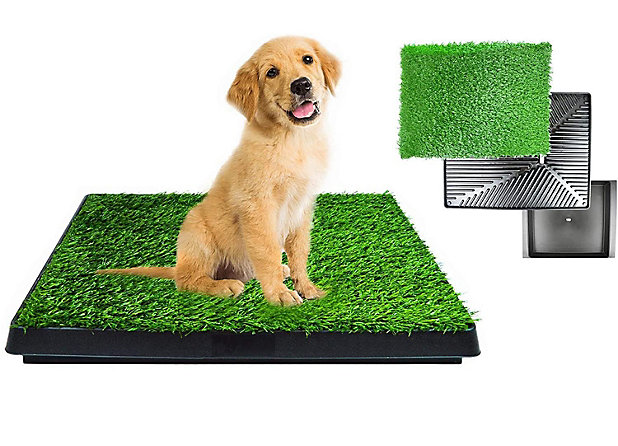Potty training a dog is an essential skill for every pet parent. But don’t worry—it’s not as daunting as it sounds! With a little patience, consistency, and some playful strategies, you can have your pup house-trained in no time. Whether you’re bringing home a new puppy or adopting an older dog, this guide will walk you through the steps to success. Let’s dive into the fun world of potty training!
Understanding Your Dog’s Natural Instincts
Why Your Dog Wants to Please You
Before we get into the nitty-gritty of potty training, it’s important to understand a key fact: dogs naturally want to please their owners. Their instincts push them to find patterns and routines that make you happy, and luckily for us, this includes bathroom habits!
Dogs thrive on structure, and setting up a clear routine helps them learn where and when to do their business. Remember, potty training is about tapping into their instincts and creating a positive experience for both of you. The more you understand how your dog thinks, the easier it will be to train them.
Setting Up a Routine
Consistency is Key
Dogs are creatures of habit, and when it comes to potty training, setting up a daily routine is a game-changer. A predictable schedule helps your dog learn when it’s time to go outside.
Start by taking your dog out first thing in the morning. Follow this with bathroom breaks after meals, play sessions, and naps. Consistency is crucial! The more regular you are with these trips outside, the quicker your dog will catch on.
Also, try to bring them to the same spot every time. Familiar smells encourage them to go potty, reinforcing that this is their designated area. Over time, they’ll get the hang of it!
Using Positive Reinforcement
Celebrate Every Success
Let’s be real—who doesn’t love a little reward? Dogs certainly do! Positive reinforcement is a powerful tool when potty training. Every time your dog does their business in the right spot, shower them with praise, pets, and maybe even a tasty treat. This reinforces good behavior and makes them more likely to repeat it.
Make sure the praise happens immediately after they finish, so they connect the dots. Timing is everything! If you wait too long, your pup may not understand what they’re being rewarded for.
However, accidents will happen—especially in the beginning. It’s all part of the learning process. Stay patient, and don’t scold or punish your dog for mistakes. Instead, focus on celebrating the wins!
Crate Training: A Handy Tool
Turning a Crate Into a Safe Space
Crate training can be an invaluable tool for potty training, especially for younger puppies. Dogs have a natural aversion to soiling their sleeping area, so a crate can help establish boundaries when you’re not around to supervise.
Think of the crate as your dog’s cozy den, not a punishment. When introduced correctly, dogs see their crate as a safe, comfortable space. Start by placing them in the crate for short periods and gradually increasing the time as they become more comfortable.
Just be sure to give them plenty of opportunities to go outside. Puppies can only hold their bladder for so long, so frequent potty breaks are a must!
Handling Accidents Like a Pro
What to Do When Mistakes Happen
Accidents are inevitable when potty training—no matter how diligent you are. But the way you handle them can make all the difference in how quickly your dog learns.
If you catch your dog in the act, interrupt them with a gentle “no” and immediately take them outside. When they finish in the right spot, reward them! The goal is to guide them toward better behavior rather than punishing them for mistakes.
For accidents that happen when you’re not around, simply clean up the mess without making a fuss. Be sure to use an enzyme cleaner to eliminate any lingering odors. Dogs have powerful noses, and if they can smell past accidents, they may assume that spot is fair game.
Gradual Freedom in the House
Earning More Room as They Learn
Once your dog starts getting the hang of things, you can gradually give them more freedom around the house. At first, restrict them to one room or area where you can keep a close eye on them. As their potty habits improve, expand their space little by little.
Giving them too much freedom too soon can overwhelm them and lead to more accidents. Think of it as earning their house privileges. The more success they have, the more you can trust them with new spaces!
And remember, even if they’re doing great, it’s important to stay consistent with your potty breaks and praise.
Potty Training Older Dogs
It’s Never Too Late!
You might think potty training is just for puppies, but older dogs can learn the ropes too! Whether you’ve adopted an adult dog or your furry friend is just a bit behind on house training, the process is largely the same.
The key with older dogs is patience and understanding. They may have ingrained habits or past experiences that make training a little trickier. But with consistency, positive reinforcement, and a solid routine, older dogs can learn just as well as puppies.
If you’re struggling, consider talking to a professional dog trainer. They can offer personalized tips and guidance tailored to your dog’s unique situation.
Signs Your Dog Needs to Go
Reading Their Body Language
Learning to read your dog’s signals can save both of you from potential accidents. Common signs that your dog needs to go include sniffing around, circling, or pacing. Some dogs may also whine or head toward the door.
Pay attention to these cues and act quickly. The sooner you respond to their signals, the better you’ll be able to reinforce the habit of going outside.
It’s also helpful to keep an eye on their behavior during specific times, like after meals or playtime. These are prime moments when they’ll likely need to relieve themselves!
